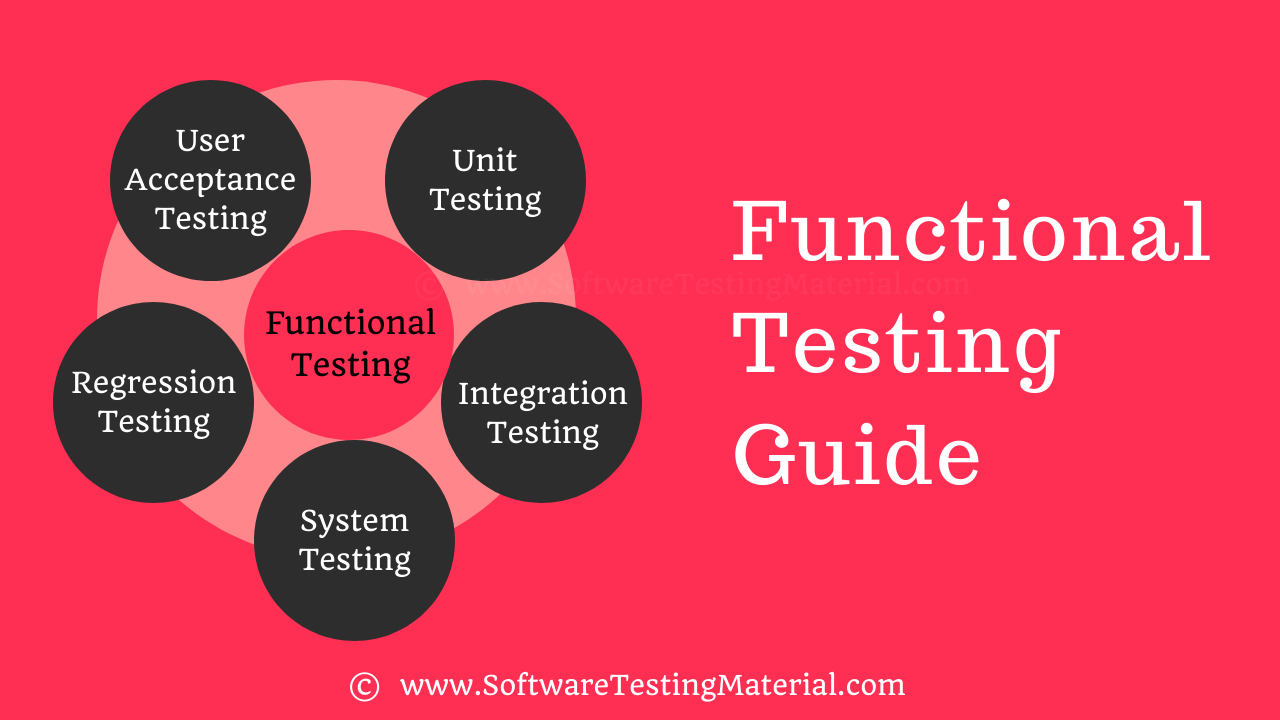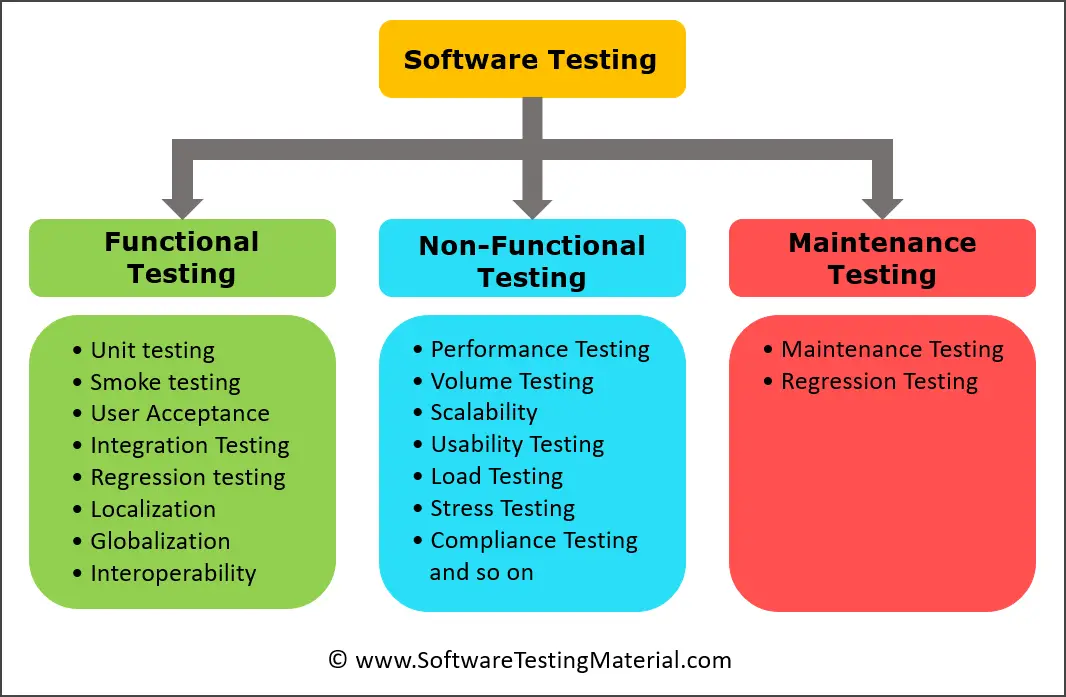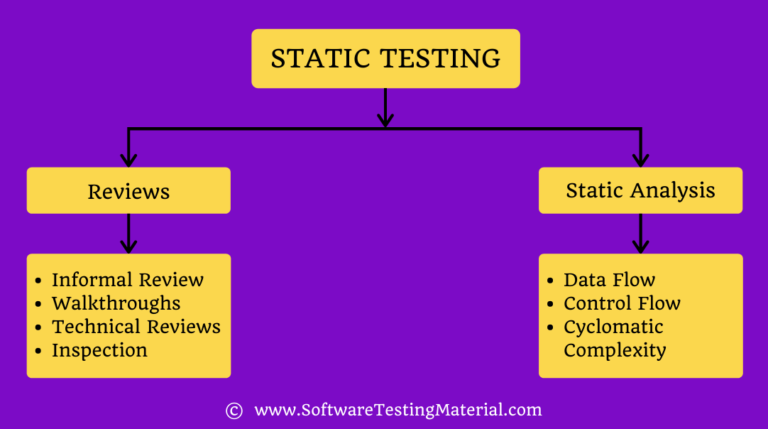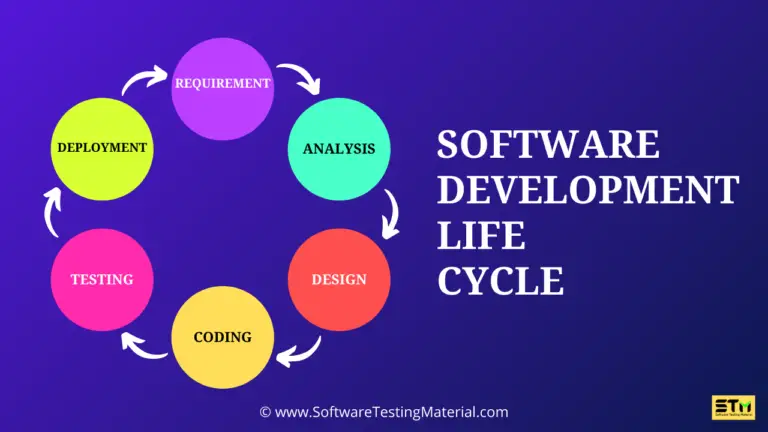Functional Testing: A Complete Guide For Beginners

In this article, we are going to learn Functional Testing in detail. After you finished reading this blog post, you will learn the following.
We know that every project has three important aspects such as Quality, Cost & Time. The objective of any project is to get a high-quality output while controlling the cost and the time required for completing the project.
Functional testing is a subset of Software Testing.
The types of testings are as follows
1. Functional testing
2. Non-functional testing
3. Maintenance testing

Although the list of testing types below is not exhaustive, it does provide a comprehensive overview of some of the most commonly used testing methods. For a complete guide to all 100+ types of testing, please refer this resource.
What is Functional Testing?
In simple words, what the system actually does is functional testing. To verify that each function of the software application behaves as specified in the requirement document. Testing all the functionalities by providing appropriate input to verify whether the actual output is matching the expected output or not. It falls within the scope of black box testing and the testers need not concern about the source code of the application.
Functional Testing Types
There are several types of testing that are performed to ensure the quality of a software. Some of the most important types of functional testing are as follows:
#1. Unit Testing
Unit Testing is also called Module Testing or Component Testing. It is done to check whether the individual unit or module of the source code is working properly. It is done by the developers in the developer’s environment.
#2. Integration Testing
Integration Testing is the process of testing the interface between the two software units. Integration testing is done by multiple approaches such Big Bang Approach, Top-Down Approach, Bottom-Up Approach, and Hybrid Integration approach.
#3. System Testing
Testing the fully integrated application to evaluate the system’s compliance with its specified requirements is called System Testing AKA End to End testing. Verifying the completed system to ensure that the application works as intended or not.
#4. Regression Testing
Repeated testing of an already tested program, after modification, to discover any defects introduced or uncovered as a result of the changes in the software being tested or in another related or unrelated software components.
#5. User Acceptance Testing
It is also known as pre-production testing. This is done by the end users along with the testers to validate the functionality of the application. After successful acceptance testing. Formal testing conducted to determine whether an application is developed as per the requirement. It allows the customer to accept or reject the application. Types of acceptance testing are Alpha, Beta & Gamma.
#6. Black Box Testing
Black Box Testing is a software testing method in which testers evaluate the functionality of the software under test without looking at the internal code structure. This can be applied to every level of software testing such as Unit, Integration, System and Acceptance Testing.
Functional Testing Techniques
Functional testing can be done in the following methods.
#1. Requirements Based Testing
Requirements Based Testing contains all the functional specifications which form a basis for all the test cases written.
#2. Business Scenarios Based Testing
Business Scenarios Based Testing contains information about how the system will be perceived from the perspective of the business process.
Functional Testing vs Non-Functional Testing
Earlier we have discussed the difference between functional testing and non-functional testing. Check this post for a detailed explanation.
Functional Testing Tools
#1. Selenium
Selenium is possibly the most popular open-source test automation framework for Web applications. Being originated in the 2000s and evolved over a decade, Selenium has been an automation framework of choice for Web automation testers, especially for those who possess advanced programming and scripting skills. Selenium has become a core framework for other open-source test automation tools such as Katalon Studio, Watir, Protractor, and Robot Framework.
Selenium supports multiple system environments (Windows, Mac, Linux) and browsers (Chrome, Firefox, IE, and Headless browsers). Its scripts can be written in various programming languages such as Java, Groovy, Python, C#, PHP, Ruby, and Perl. While testers have flexibility with Selenium and they can write complex and advanced test scripts to meet various levels of complexity, it requires advanced programming skills and effort to build automation frameworks and libraries for specific testing needs.
#2. UFT/QTP
UFT is a commercial tool and it is a very user-friendly Functional Test tool by Microfocus.
#3. Watir
Watir is an open-source testing tool for web automation testing based on Ruby libraries. Watir supports cross-browser testing including Firefox, Opera, headless browser, and IE. It also supports data-driven testing and integrates with BBD tools like RSpec, Cucumber, and Test/Unit.
Check this post for a detailed list of Functional Testing Tools
Here I have hand-picked a few posts which will help you to learn more interview related stuff:
- Selenium Tutorial
- Manual Testing Tutorial
- SQL Tutorial for Software Testers
- Performance Testing Tutorial
- Security Testing Tutorial
- API Testing Tutorial






